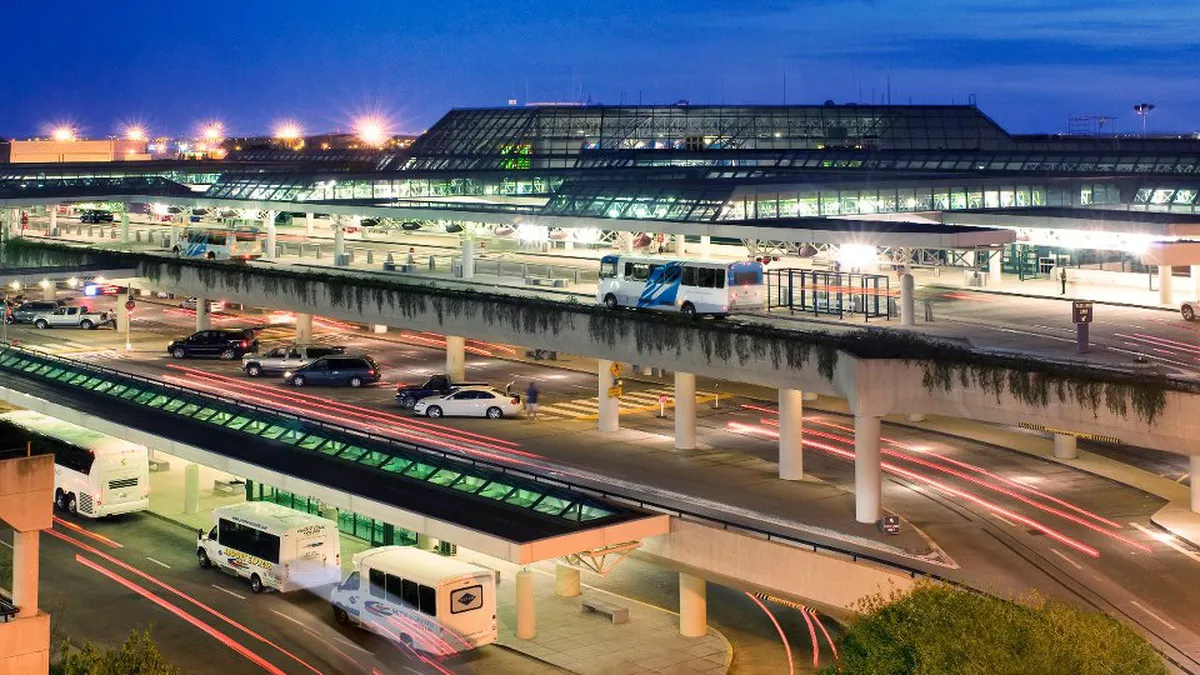

Besides providing nonstop flights to many cities in the U.S. The hub was intended to compete with Delta Air Lines, Eastern Air Lines and Piedmont Airlines for north–south traffic in the eastern United States. Īmerican Airlines announced in 1985 that it would establish a hub at Nashville, and it officially opened in 1986.


In 1989 a new parallel runway (2R/20L) was opened for use.
#Bna arriving flights code
It is now rare to see the "Berry Field" portion used, but the airport's IATA code (BNA) is short for Berry Field Nashville, and the military facilities at the airport are still commonly known by this name. An international wing was built in Concourse A the airport was renamed Nashville International Airport/Berry Field. The new terminal had three main concourses and a smaller commuter concourse radiating from a distinctive three-story atrium. In the early 1980s the MNAA commissioned Robert Lamb Hart, in association with the firm of Gresham, Smith and Partners, to design a modern terminal construction began on the opposite side of the existing two crossing runways in 1984 and was completed in 1987. In 1973 the newly created Metropolitan Nashville Airport Authority (MNAA) finalized a plan for the long-term growth of the airport the plan included a new terminal and a new parallel runway across Donelson Pike to increase capacity by reducing time between takeoffs and landings. Hub years īy the 1970s the airport was again in need of expansion and modernization. In 1962 Nashville became the first municipal airport in the United States with a public reading room when the Nashville Public Library opened a branch inside the terminal. These renovations also included expansion of an existing runway, with 2L/20R being extended by 600 feet (180 m), and the construction of a new crosswind runway, 13/31. For the first time more than half a million people passed through the airport when the six airlines that served Nashville carried 532,790 passengers. 1961 also saw the first scheduled jets at Berry Field, American Airlines 720/720Bs. In 1961, a new 145,000 square feet (13,500 m 2) terminal opened off of Briley Parkway, west of runway 2L.

The airport had been enlarged by the military during World War II, but in 1958 the City Aviation Department started planning to expand and modernize the airport. At the end of the war, the airport was returned to the control of the city, with a number of facilities remaining for support of the tenant unit of the Tennessee National Guard. During this time, the Federal government expanded the airport to 1,500 acres (6.1 km 2). Tennessee National Guard facilities at Berry Field during World War IIĭuring World War II, the airfield was requisitioned by the United States Army Air Forces Air Transport Command as the headquarters for the 4th Ferrying Command for movement of new aircraft overseas. In its first year Berry Field served 189,000 passengers. The new airport had three asphalt runways, a three-story passenger terminal, a control tower, two hangars and a beacon, and was built at a cost of $1.2 million. Passenger service began in mid-July through American Airlines and Eastern Airlines, both of which operated Douglas DC-3s. It opened in June 1937 with much fanfare, including parades, an air show, and an aerial bombardment display by the 105th Aero Squadron, which was based at the field. Berry, the Tennessee administrator for the Works Progress Administration. The airport was dedicated on November 1, 1936, as Berry Field, named after Col. A 340-acre (1.4 km 2) plot along Dixie Parkway (now Murfreesboro Road) composed of four farms was selected, and construction began in 1936 as one of the first major Works Progress Administration projects in the area. īy 1935 the need for an airport larger and closer to the city than Sky Harbor Airport was realized and a citizens' committee was organized by Mayor Hilary Ewing Howse to choose a location. The first airlines to serve Nashville, American Airlines and Eastern Air Lines, flew out of Sky Harbor Airport in nearby Rutherford County. It was replaced by Blackwood Field in the Hermitage community, which operated between 19. Nashville's first airport was Hampton Field, which operated until 1921. Eastward view of Berry Field's original administration building


 0 kommentar(er)
0 kommentar(er)
